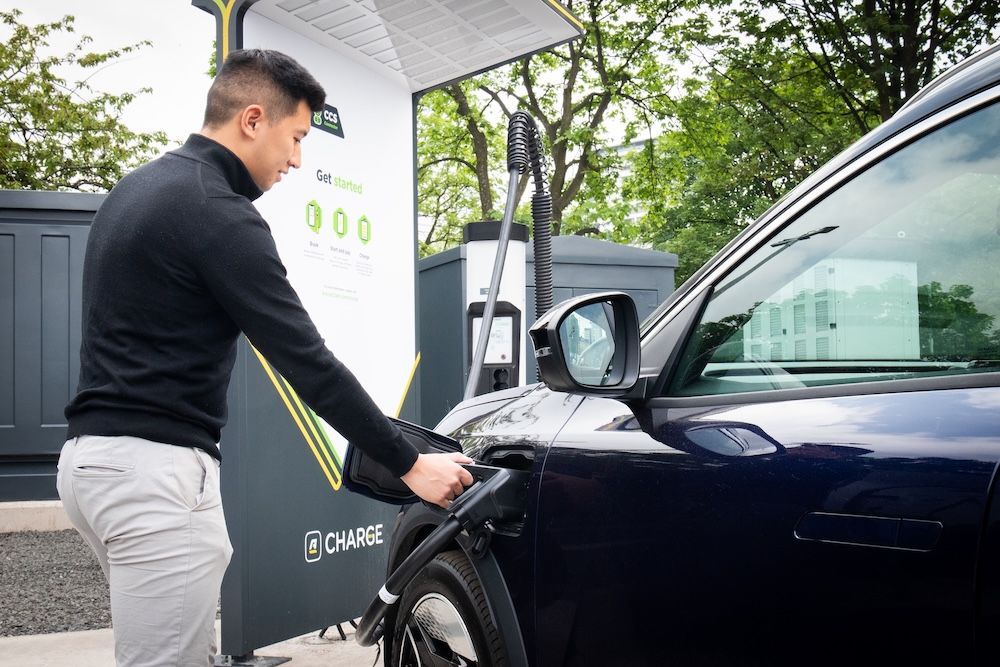Giles Benbow, Head of Fleet Transition at Mer – Statkraft’s EV charging business explains why urban charging hubs are the future.
Electric vehicle sales continue to rise, with more than a quarter of new vehicles registered in the UK in 2021 classed as electric according to data released by the Society of Motor Manufacturers and Traders (SMMT). This has to be good news in terms of progress towards the UK Climate Change Committee’s goal of 100% of new vehicle sales being electric by 2035 (and ideally by 2030) to meet our net-zero carbon target.
But electric vehicles need to be charged, and a lack of public charging points is now seriously holding back further progress. Indeed, commenting on record-breaking EV sales seen during 2021, Mike Hawes, Chief Executive of SMMT, noted that increased take-up is no longer hampered by the availability of vehicles. Rather, he said, “The biggest obstacle to our shared net-zero ambitions is not product availability, however, but cost and charging infrastructure.”
An unsustainable model of growth
The number of public EV charging points grows daily, and recent Department for Transport figures, put the number at 28,375, with 5,156 being rapid chargers. This is good news, and the growth in rapid charging is particularly heartening. It shows local authorities’ commitment to supporting electric vehicles.
But the current strategy for growing public charging capacity on streets is constrained by finite capacity and limitations on both technology and finance.
6.6 million households in the UK lack off-street parking and therefore must use public streets or car parks as a permanent parking solution. Often private charging from home is not possible as people lack a front driveway and running a cable from front door to car, across a footway, is illegal under the Highways Act 1980.
Added to this challenge is the fact that the geographical spread of public chargers around the UK is far from even. London has by far and away the highest number of public chargers per capita, at 102 per 100,000 of the population, with the whole of Scotland sitting in second place with barely half that at 52 public chargers per 100,000. No other region rises above 45 public chargers per 100,000.
A further challenge for the EV charging infrastructure is power availability. On-street charging is often difficult to implement because of limited grid capacity. The streets-based electricity grid was simply not designed to support the capacity that EV charging requires, and in many cases building that support today makes the cost of installing new charging infrastructure not viable without financial subsidy. While grant funding is available today, it is not guaranteed in the long term.
Urban charging hubs are the future
And yet we must level up our EV charging infrastructure if we are to support the continued growth of electric vehicles. While lamp-post trickle chargers and street-based EV chargers are part of the mix, we have yet to see true growth in urban charging hubs, and it is this ingredient which can remove the bottleneck that’s in danger of halting a rise in EV adoption.
Urban charging hubs are clusters of chargers with rapid or even ultra-rapid capacity. A vehicle can get enough charge to continue a journey in under 20 minutes. If placed in public car parks, near places where people want or need to be, charging is completed as part of a regular routine. This is the electrical equivalent of the fossil-fuel petrol station.
Grid capacity needs to support this kind of infrastructure, but that’s easier to accommodate than it is on urban streets. Local authorities may well already have numerous appropriate locations with suitable capacity. And financial viability is less of an issue too. With faster charging and therefore rapid turnaround of users, and locations in popular spots, the wheeled equivalent of footfall can be maximised. The growing number of home delivery vehicles, taxis and other commercial fleet running on electric can be serviced alongside private vehicles too, opening up wider and new markets.
Local authorities are doing great work in supporting electric vehicle charging. They now need to explore new avenues, and through urban charging hubs they can continue their mission to foster a zero-emissions future, while generating income to reinvest locally.










